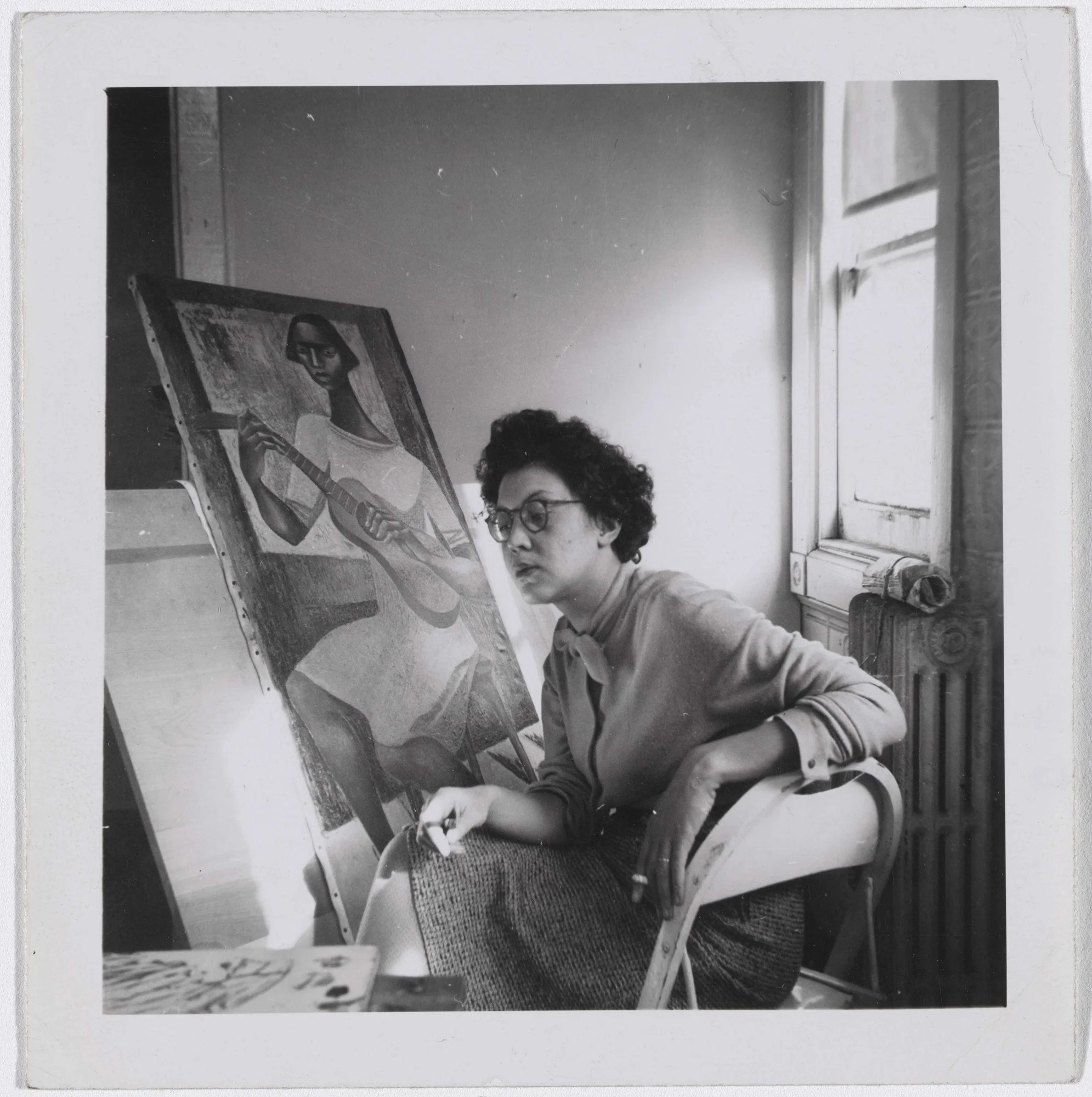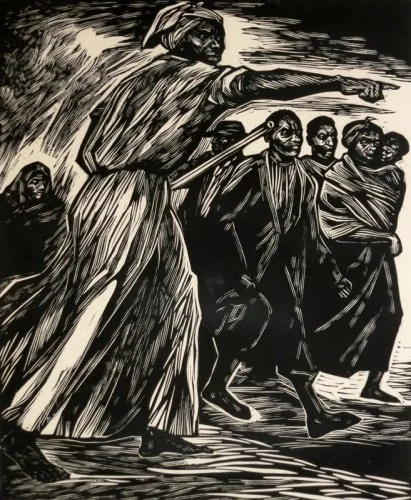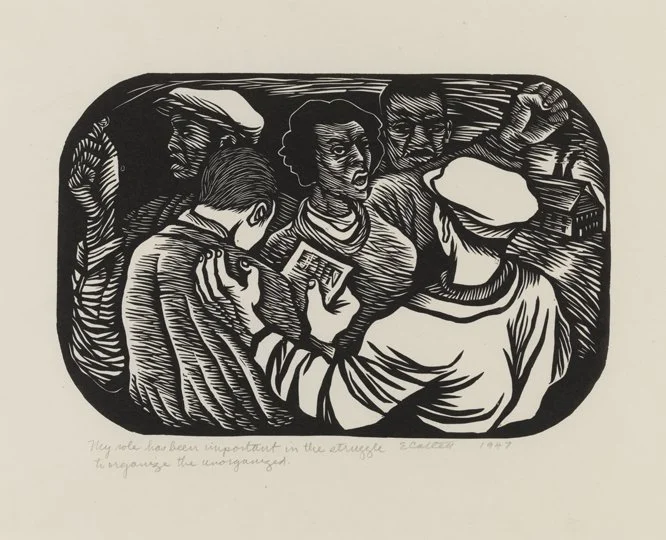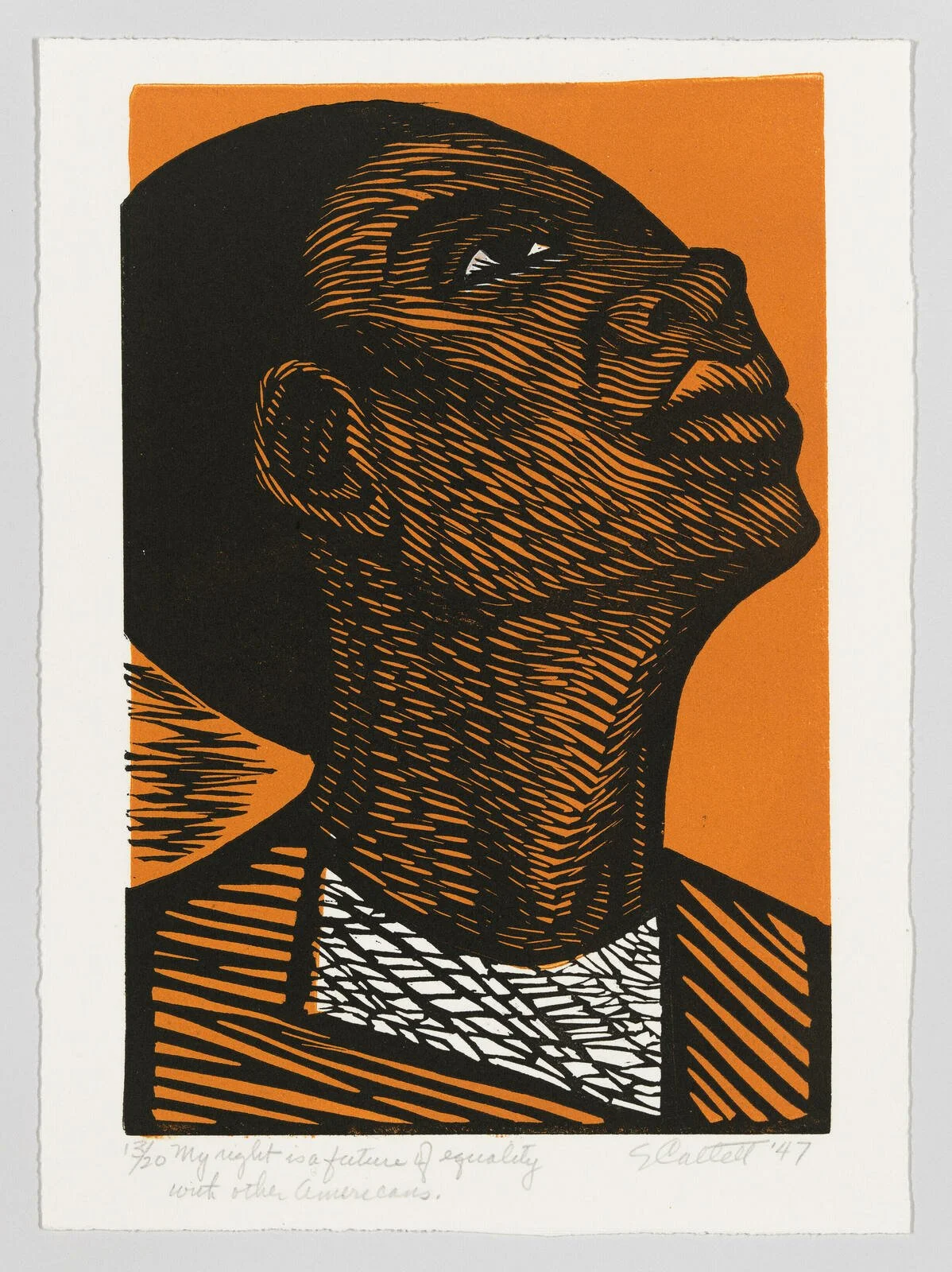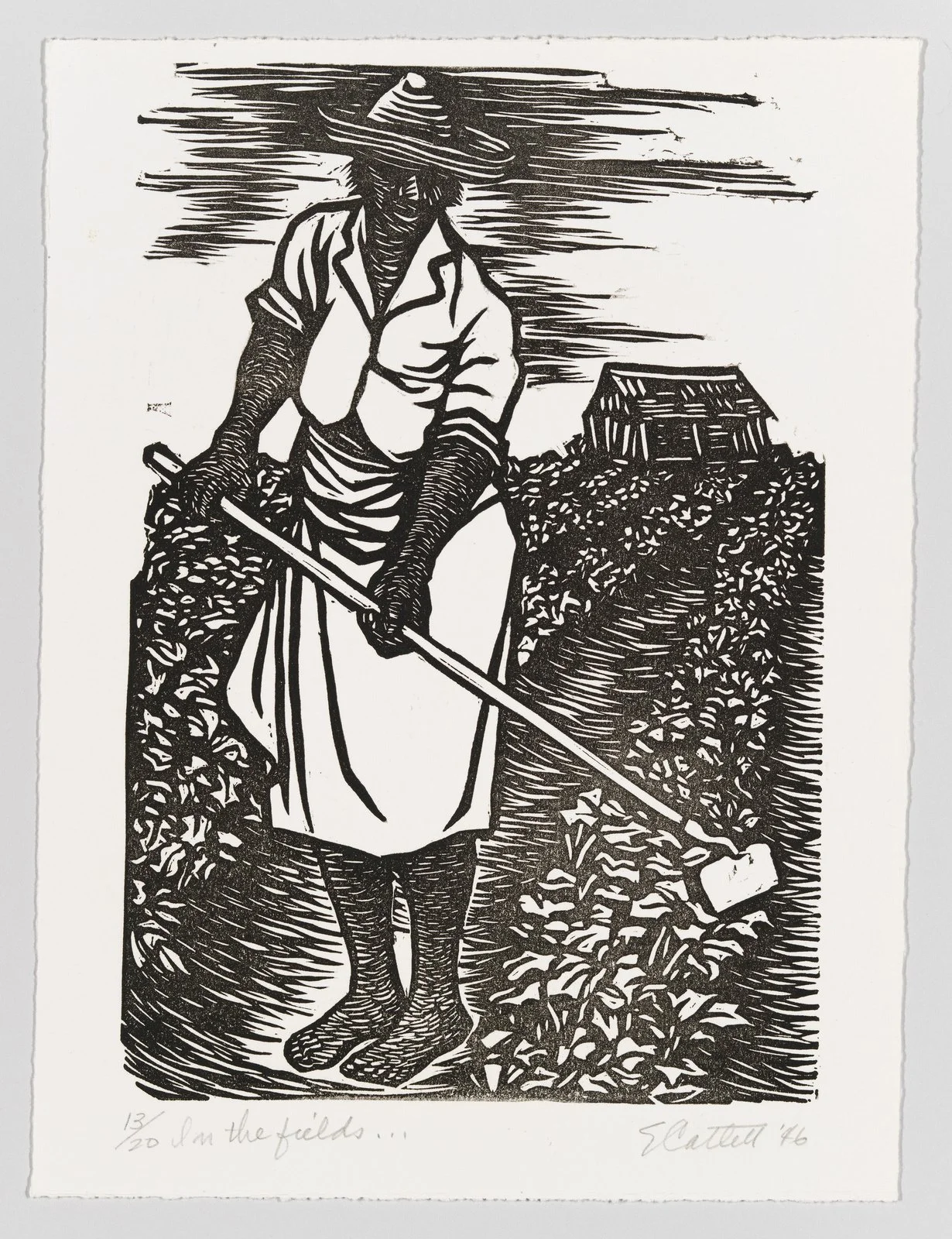RADICAL INK
Elizabeth Catlett
Elizabeth Catlett is where I want to begin. Her work quite literally stopped me in my tracks the first time I saw it.
It wasnt just her technical skill, although that is quite incredible. For me the strength of her lines, the way she understood form and figure, was absolutely masterful. What really struck me was how emotionally real her work felt. Her work stands— firm, strong, unshakeable. Her images stay with you.
Catlett was born in 1915 in Washington, D.C., a time and place where Black women were denied almost every opportunity. But she carved out her own path. She studied at Howard University and then became the first Black woman to earn a Master of Fine Arts from the University of Iowa.
From the very beginning, her work focused on everyday people — especially Black women, workers, and children. She wasn’t interested in idealised figures or abstract gestures. Her subjects had weight. They were grounded. You could feel their presence, their struggle, their strength.
In the 1940s, she moved to Mexico. That move was more than a relocation — it was a political choice. In Mexico, she found a different kind of creative freedom. She joined the Taller de Gráfica Popular, a printmaking collective that made political posters and prints in solidarity with workers and communities.
This was a time when the idea of using art for protest was radical in itself — and Catlett was doing it not just as a woman, but as a Black woman, in a male-dominated space, in another country. She stayed in Mexico for the rest of her life. Her political views made her a target — the U.S. government revoked her citizenship and she wasn’t allowed back for years. But she kept going. She kept making. She kept teaching. She kept fighting for justice through her work.
She was well known for abstract sculpture in bronze and marble as well as prints and paintings, particularly depicting the female figure, Elizabeth Catlett is unique for distilling African American, Native American, and Mexican art in her work. She is “considered by many to be the greatest American black sculptor”. . .(Rubinstein 320)
What I admire most about Elizabeth Catlett is how much her work holds.
It’s full of contradictions: bold but tender, precise but deeply human. You don’t just see her prints — you feel them.
She’s a reminder that printmaking can do more than decorate. It can carry voices. It can hold memory. It can be an act of resistance.
Catlett died in 2012 at the age of 96. But her legacy is alive and well — in every artist who believes in the power of images to tell the truth, to stand with people, and to demand better.
I’ll be sharing more artists in this Radical Printmakers series soon. If there’s someone whose work has moved you, I’d love to hear about them.


